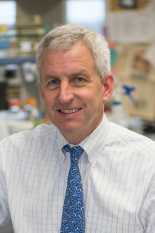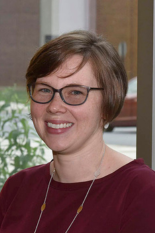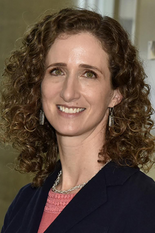News Story
University of Maryland Dedicates A. James Clark Hall
The University of Maryland dedicates the new A. James Clark Hall today, a 184,000-square-foot facility that will catalyze engineering innovation and bioengineering breakthroughs and serve as a hub for new partnerships and collaborations throughout the Baltimore-Washington region. A. James Clark Hall is the only space in the nation dedicated to bioengineering and the translation of health-related products that incorporates FDA-funded Centers of Excellence in both Regulatory Science and Pediatric Device Innovation.
“Great ideas will turn into life-changing devices and biomedical treatments in this magnificent research building,” said University of Maryland President Wallace D. Loh. “Our students, faculty, researchers and partners will have what they need to produce bioengineering marvels, as well as advances in other fields.”
Made possible by the generosity and vision of the late A. James Clark, an alumnus and long-time supporter of the university; the State of Maryland; alumnus and biomedical pioneer Robert E. Fischell; and other donors, Clark Hall will help UMD attract the best and brightest students and faculty to make groundbreaking research possible. The building offers flexible classrooms, an innovation lab, capacity for collaborative student projects and nearly 40,000 square feet of state-of-the-art research laboratories.
“My father felt the University’s decision to name the School of Engineering after him was the most meaningful honor he would ever receive,” said Courtney Clark Pastrick, board chair of the A. James & Alice B. Clark Foundation. “I think he would be humbled to have this cornerstone of innovation named in his honor. Our family is proud of its potential to truly transform the future of education and health in our world.”
Clark Hall is designed to facilitate collaboration and advance cross-disciplinary work. At the heart of the building’s first floor lies the Leidos Innovation Lab, supported by a donation from the Leidos Corporation. The lab provides 6,800 square feet of space for students to work together on cross-disciplinary research and designs, and features overhead utilities, digital displays and movable workbenches, creating an ideal environment for collaboration.
Instructional laboratories and prep areas throughout the building will spur the organic flow of ideas, and a prototyping/fabrication lab will enable innovators to produce instant prototypes of their designs. Two flex classrooms will allow faculty to transform their space into lecture-style rows or small clusters of group tables. Student club rooms will give student startups, competition teams and other groups ample space to develop their ideas and innovations.
“Clark Hall embodies the future of multidisciplinary engineering with human impact,” said Darryll J. Pines, dean of the Clark School and Farvardin professor of engineering. “Our engineers have a long history of life-changing innovations, from the implantable insulin pump to 3-D printed vascular grafts. These state-of-the-art facilities will create the next generation of engineers who will advance human health worldwide, transforming millions of lives.”
Clark Hall will provide world-class research facilities to the Fischell Department of Bioengineering and the Robert E. Fischell Institute for Biomedical Devices, dedicated to the research and development of new technologies to promote human health. Thanks to the vision and financial support from Fischell, bioengineering has become one of the university’s fastest-growing undergraduate degree programs.
"At the center of the region’s biotech corridor, Clark Hall will offer new opportunities for engineers across all eight disciplines to connect with experts from the University of Maryland School of Medicine on innovations that will change the course of human health for decades to come,” said Fischell Family Distinguished Professor and Bioengineering Department Chair John Fisher. “In this way, researchers from both the College Park and Baltimore campuses can utilize resources housed within Clark Hall to tackle challenges in areas ranging from cancer therapeutics and diagnostics to rehabilitation robotics and tissue engineering.”
A dedicated instructional lab will house top-notch equipment for a broad range of applications, and an imaging suite with cutting-edge technologies that will allow close examination of the body and brain. A bioengineering computational lab will give UMD engineering students and researchers unprecedented modeling and computing power for critical tasks.
Clark Hall will also serve as a hub for new partnerships across the region, bringing students and faculty together with experts from venture firms, research labs, technology companies and federal agencies, to inspire new technologies and improve human health.
A high-tech dynamic forum will be available to host national and international conferences, lectures and seminars, and educational programming aimed at convening the broader engineering community. Conference rooms on each floor and the commons and terrace space will provide additional areas for collaboration.
The legacy of A. James Clark at the University of Maryland extends beyond Clark Hall. The late A. James Clark never forgot that his business successes began with an engineering scholarship at the University of Maryland. In October 2017, the university announced an unprecedented $219.5 million investment from the A. James & Alice B. Clark Foundation. Building Together: An Investment for Maryland will increase college access and affordability, inspire the next generation of engineering leaders and spark innovation that tackle today’s most daunting problems.
Clark Hall is also made possible by the generosity of T.K. Patrick and Marguerite Sung, Lawrence C. and Melanie Franco Nussdorf, Ronald and Karen Lowman, Rajan and Sandhya Mittu, and Pepco Holdings, Inc.
For more information about A. James Clark Hall, visit http://eng.umd.edu/james-clark-hall.
For photos of A. James Clark Hall, visit https://go.umd.edu/clarkhallphotos.
What Are People Saying about Clark Hall?
Robert E. Fischell: "I was pleased to be able to provide a substantial gift to the School of Engineering to start the Fischell Department of Bioengineering and the Robert E. Fischell Institute for Biomedical Devices to encourage future engineering students to create wonderful new medical devices for the benefit of all mankind."
Roger Krone, Leidos Chairman and CEO: “The Leidos mission to make the world safer, healthier and more efficient requires an innovative workforce. Leidos proudly supports the University of Maryland’s Fearless Ideas Campaign, further equipping the nation’s future engineering labor pool by using our cutting-edge Leidos Innovation Lab on the first floor of the new A. James Clark Hall.”
T.K. Patrick and Marguerite Sung: “As strong proponents of innovation to enhance human health, we were excited to invest in A. James Clark Hall. We are thrilled to be part of this spectacular building project and look forward to hearing about the many ways Maryland engineers will help improve the human condition through bioengineering solutions.”
Lawrence Nussdorf: “Jim Clark was a builder. He leaves his mark on the building he built, the company that bears his name, the region he helped change, the personal values he passed down to those of us lucky enough to work for him and the good works and young students he endowed and mentored.”
Ron and Karen Lowman: “For an excellent program to continue to succeed, it needs to be continually enriched with the best students, a superior faculty, innovative ideas and improved facilities. We are proud to be a small part of moving the Clark School forward to future success.”
Rajan and Sandhya Mittu: “When we were at the Clark School in the 80’s, there was nothing like Clark Hall. We feel very fortunate that we are able to fund an InTerp Suite, to help aspiring entrepreneurs build their companies.”
Published November 10, 2017









